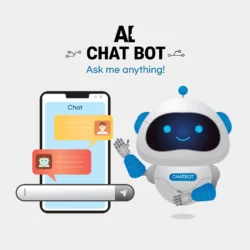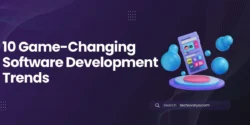In the fast-evolving landscape of software development, 2025 marks a pivotal year where artificial intelligence has become an indispensable ally for programmers. Gone are the days when coding was solely a human endeavor; today, AI tools augment creativity, streamline workflows, and tackle complex problems with unprecedented efficiency. These tools range from code autocompletion assistants to full-fledged agentic environments that can autonomously handle multi-file projects, debug issues, and even generate entire applications from natural language prompts.
The integration of AI in programming not only boosts productivity—potentially by 30-50% according to industry reports—but also democratizes access to advanced coding techniques, allowing junior developers to punch above their weight and seasoned pros to focus on innovation rather than boilerplate. However, with hundreds of options available, selecting the right tool can be overwhelming. This article curates the 10 best AI Coding tools for programmers in 2025, based on their popularity, features, real-world performance in coding tasks, and relevance to diverse development needs. We’ve drawn from expert reviews, user feedback, and performance benchmarks to ensure a balanced selection. Each tool is evaluated on key aspects like features, pros, cons, pricing, and practical applications, helping you choose the one that fits your workflow.
Table of Contents
1. GitHub Copilot
GitHub Copilot, an AI-powered coding assistant developed by GitHub and OpenAI, revolutionizes the programming experience by providing real-time code suggestions and autocompletions. Integrated into popular code editors like Visual Studio Code, it leverages machine learning models trained on vast repositories of code to offer context-aware recommendations, from completing single lines to generating entire functions. This tool significantly boosts programmer productivity by reducing boilerplate coding, suggesting optimized solutions, and catching potential errors early. It also aids in learning by exposing developers to new coding patterns and best practices, making it invaluable for both novice and experienced programmers across various languages and frameworks.
Key Features
- Context-Aware Suggestions: Analyzes your codebase to provide tailored code completions, supporting over 20 programming languages including Python, JavaScript, Java, and Rust.
- Chat Functionality: Integrated chat interface for asking questions about code, debugging, or generating explanations.
- IDE Integration: Seamless compatibility with Visual Studio Code, JetBrains IDEs, Neovim, and more.
- Multi-Line and Function Generation: Can autocomplete entire functions or refactor existing code based on comments.
Pros
- Dramatically reduces coding time by handling repetitive tasks.
- Improves code quality through best-practice suggestions.
- Supports collaborative features like pull request reviews in team plans.
Cons
- Occasionally suggests inefficient or duplicated code, requiring manual review.
- Limited in generating comprehensive test cases without additional prompting.
- Privacy concerns for proprietary code, though enterprise versions mitigate this.
Pricing
Free for individual users; team plans start at $4 per user per month for advanced features.
How GitHub Copilot Helps Programmers
For a full-stack developer working on a web app, Copilot can instantly generate boilerplate React components or API endpoints, freeing up time for logic and optimization. In 2025 benchmarks, it excelled in real-world tests like web programming and debugging, making it ideal for both solo coders and enterprise teams.
2. Qodo
Qodo, formerly Codium, is an AI-powered coding assistant that enhances programmer productivity by integrating advanced code generation, testing, and review capabilities into IDEs like Visual Studio Code and JetBrains, as well as Git platforms. Qodo AI assistant covers the full software lifecycle, with strong enterprise features.
Its suite of tools, including Qodo Gen for real-time code and test generation, Qodo Merge for automated pull request reviews, and Qodo Cover for boosting test coverage, ensures high-quality, reliable code. By leveraging context-aware AI, Qodo detects bugs, suggests optimized code, and automates documentation, streamlining workflows and reducing errors.
With support for all major programming languages and a focus on team collaboration and enterprise-grade security, Qodo empowers developers to write robust code faster, making it ideal for both individual coders and teams aiming to maintain consistent coding standards.
Key Features
- Code Suggestions and Tests: Generates unit tests and explanations.
- PR Reviews: Automates pull request analysis.
- Multi-IDE Support: VS Code, JetBrains, and terminals.
- Security Compliance: SOC2 for enterprise use.
Pros
- Enhances collaboration and code quality.
- Supports multiple AI models for flexibility.
- Breaks down complex code for better understanding.
Cons
- Premium features locked behind paid plans.
- May overwhelm solo users with enterprise focus.
Pricing
Free basic; Team at $19 per user per month.
How Qodo Helps Programmers
DevOps teams can automate CI/CD reviews, ensuring robust deployments in 2025.
3. Claude 4 Sonnet
Claude 4 Sonnet is an advanced AI-powered coding assistant that significantly enhances programmer productivity through its superior code generation, debugging, and reasoning capabilities. With a 200K token context window, it excels at handling large codebases, enabling seamless code reviews, bug fixes, and complex refactoring tasks across the software development lifecycle. Integrated with tools like GitHub Copilot and supported by Anthropic’s API, Claude 4 Sonnet offers precise, context-aware code suggestions and supports multiple programming languages, including Python, JavaScript, and Rust.
Its hybrid reasoning mode allows for both rapid code generation and extended step-by-step problem-solving, making it ideal for tasks like algorithmic challenges and API integrations. By reducing errors, optimizing code quality, and providing clear explanations, Claude 4 Sonnet empowers developers to build robust, production-ready software efficiently.
Key Features
- Advanced Code Generation: Handles multi-language code with detailed explanations.
- Debugging and Optimization: Analyzes code for errors and suggests improvements.
- Full Codebase Context: Processes large contexts for accurate responses.
- Command-Line Integration: Via Claude Code CLI for terminal-based assistance.
Pros
- Free access with high performance in coding tests.
- Strong in ethical AI practices, reducing hallucinations.
- Multi-factor authentication for secure use.
Cons
- Browser-only interface without a dedicated app.
- Limited free queries under heavy load.
- Less specialized for niche IDE integrations.
Pricing
Free; Pro version at $20 per month for enhanced limits.
How Claude 4 Sonnet Helps Programmers
AI researchers can use Claude to prototype algorithms in Python, benefiting from its reasoning depth. It topped 2025 leaderboards for passing real-world coding challenges.
4. Amazon Q Developer
Amazon Q Developer, formerly CodeWhisperer, a generative AI-powered coding assistant from AWS, revolutionizes software development by offering intelligent, context-aware support across the entire development lifecycle. Integrated into popular IDEs like Visual Studio Code and JetBrains, it provides real-time code suggestions, from snippets to full functions, and automates complex tasks such as feature implementation, unit testing, documentation, and code refactoring. With deep AWS integration, it excels in generating optimized cloud architecture code, troubleshooting AWS resources, and modernizing legacy applications, such as upgrading Java 8 to Java 17.
Its security scanning capabilities detect vulnerabilities and suggest fixes, ensuring secure and maintainable code. By reducing repetitive tasks and enhancing productivity with natural language-driven coding, Amazon Q Developer empowers programmers of all levels to build, deploy, and maintain high-quality applications faster and more efficiently.
Key Features
- Agentic Task Handling: Executes multi-step coding tasks like code transformations and security scans.
- IDE and CLI Support: Integrates with VS Code, JetBrains, and AWS CLI for seamless workflows.
- Security-First Design: Scans for vulnerabilities and adheres to AWS IAM policies.
- Test Generation: Automatically creates unit tests with high coverage.
Pros
- Deep integration with AWS ecosystems, ideal for cloud devs.
- High accuracy in generating reliable, secure code.
- Processes external artifacts like logs for contextual suggestions.
Cons
- Less effective outside AWS environments.
- Free tier limits on chats and code lines.
- Steeper curve for non-AWS users.
Pricing
Free tier with 50 agentic chats and 1,000 lines; Pro at approximately $19 per user per month.
How Amazon Q Developer Helps Programmers
Backend engineers building serverless apps can leverage Q to auto-generate Lambda functions and IAM roles, accelerating deployment. In 2025, it’s essential for enterprise cloud projects.
5. Google Gemini Pro 2.5
Google Gemini 2.5 Pro, an advanced AI-powered coding assistant, significantly enhances programmer productivity with its superior coding capabilities, particularly in building interactive web applications. Released in early access as the “I/O Edition” in May 2025, it offers improved code generation, transformation, and editing, excelling in benchmarks like the WebDev Arena Leaderboard, where it surpassed its predecessor by 147 Elo points. Its million-token context window enables it to handle extensive codebases and diverse data types, including video, images, and audio, making it ideal for complex, multimodal projects.
Available through Google AI Studio, Vertex AI, and the Gemini app, it reduces errors in function calling, improves workflow automation, and supports rapid prototyping, empowering developers to create aesthetically pleasing, functional applications with greater efficiency and precision.
Key Features
- Multimodal Support: Analyzes code screenshots alongside text prompts.
- Code Generation and Explanation: Generates code in languages like JavaScript and supports refactoring.
- Gemini CLI: Terminal integration for automated workflows and test execution.
- Cloud Integration: Seamless with Vertex AI for scalable apps.
Pros
- Significant improvements in accuracy from prior versions.
- Free limited use with token-based scaling.
- Handles diverse tasks like UI debugging via images.
Cons
- Unpredictable costs with token pricing.
- No dedicated desktop app.
- Occasional query limits in free tier.
Pricing
Free for basic use; token-based via Google AI Studio for higher volumes.
How Google’s Gemini Pro 2.5 Helps Programmers
Frontend devs can upload UI mocks to generate responsive CSS, making it versatile for 2025’s visual-heavy projects.
6. ChatGPT Plus
ChatGPT Plus, a subscription-based AI coding assistant from OpenAI, enhances programmer productivity by offering advanced code generation, debugging, and learning support for a wide range of programming languages, including Python, JavaScript, and Java. Priced at $20 per month, it provides faster response times, priority access during peak usage, and access to the more advanced GPT-4 model and GPT-5 model, which delivers context-aware code suggestions and improved error analysis compared to the free version. Developers benefit from its ability to generate clean, well-commented code snippets, troubleshoot complex bugs, and explain intricate coding concepts, making it a valuable tool for both novice and experienced programmers. By streamlining workflows, reducing debugging time, and offering insights into best practices, ChatGPT Plus empowers coders to build high-quality, efficient software solutions.
Key Features
- Natural Language Coding: Converts prompts to code in any language.
- Debugging and Tutorials: Explains concepts and fixes bugs step-by-step.
- Integration Tools: Codex CLI for command-line use.
- App Support: Mac app for offline-like experience.
Pros
- Excels in broad coding scenarios, passing all benchmark tests.
- Affordable and user-friendly.
- Reduces learning curves for new tech stacks.
Cons
- Prone to hallucinations in edge cases.
- No Windows app yet.
- Requires precise prompting for best results.
Pricing
$20 per month.
How ChatGPT Plus Helps Programmers
Game developers can prototype Unity scripts quickly, leveraging its conversational strength.
7. Tabnine
Tabnine is an AI-powered coding assistant designed to enhance programmer productivity by providing intelligent code completions and suggestions within popular IDEs like Visual Studio Code, IntelliJ, and PyCharm. Leveraging advanced machine learning models trained on vast codebases, Tabnine offers context-aware, language-agnostic recommendations that range from single-line completions to entire code blocks, adapting to a developer’s coding style and project context. It accelerates coding workflows by minimizing repetitive tasks, reducing errors, and suggesting optimized solutions, while also supporting team-specific models for consistent code quality. For programmers, Tabnine serves as a versatile tool that boosts efficiency, fosters learning of new coding patterns, and supports a wide array of programming languages and frameworks.
Key Features
- Personalized Code Completions: Learns from your codebase to suggest context-specific code, supporting languages like Go, C++, and TypeScript.
- Code Refactoring and Linting: Automatically detects errors, suggests optimizations, and assists in restructuring code.
- Automatic Documentation: Generates inline comments and docstrings for functions.
- Privacy-Focused: Enterprise version runs on local models to keep data secure.
Pros
- Highly customizable, allowing fine-tuning with your team’s code patterns.
- Reduces bugs through proactive linting and error detection.
- Broad IDE support, including VS Code, IntelliJ, and Eclipse.
Cons
- Free version has limited features, pushing users toward paid plans.
- Can be less intuitive for beginners in niche languages.
- Occasional over-reliance on open-source patterns may lead to generic suggestions.
Pricing
Basic AI completions are free; Pro plan at $9 per user per month unlocks advanced customization.
How Tabnine Helps Programmers
Data scientists using Python for machine learning models benefit from Tabnine’s ability to suggest optimized NumPy or TensorFlow code, cutting development cycles. Its strength in adapting to individual styles makes it a favorite for long-term projects in 2025.
8. Cursor
Cursor is an AI-powered code editor and coding assistant, built as a fork of Visual Studio Code, designed to streamline programming by integrating advanced AI features directly into the development workflow. It leverages large language models like GPT-4 and Claude to provide context-aware code suggestions, natural language code generation, real-time debugging, and intelligent refactoring across multiple files. Programmers benefit from Cursor’s ability to understand entire codebases, enabling it to offer precise autocomplete suggestions, explain complex code, and generate unit tests or documentation with minimal effort. By automating repetitive tasks and providing seamless integration with existing VS Code extensions, Cursor enhances productivity, reduces errors, and supports developers of all skill levels in writing cleaner, more efficient code across various programming languages.
In 2025, it’s gained traction for its agentic capabilities, allowing AI to edit multiple files autonomously.
Key Features
- Multi-File Editing: Handles complex changes across an entire codebase with natural language instructions.
- Real-Time Suggestions: Powered by models like GPT-4o, it offers inline code generation and debugging.
- Context Awareness: Maintains full project context for accurate suggestions.
- Integrated Chat: Side-panel AI chat for queries, explanations, and test generation.
Pros
- Feels familiar to VS Code users while adding powerful AI layers.
- Excellent for refactoring large codebases.
- Supports collaborative editing in team settings.
Cons
- Heavier resource usage compared to lightweight tools.
- Dependency on internet for AI models in free tiers.
- Learning curve for leveraging advanced agentic features.
Pricing
Free tier available; Pro at $20 per month for unlimited usage and advanced models.
How Cursor Helps Programmers
Mobile app developers can use Cursor to automate UI component migrations from Swift to Kotlin, streamlining cross-platform work. Its IDE integration positions it as a top choice for full-time programmers in 2025.
9. Replit AI
Replit AI, integrated into the Replit online IDE, is a powerful AI-powered coding assistant that transforms the development process by offering intelligent code completions, real-time debugging, and natural language-driven code generation for over 50 programming languages, including Python, JavaScript, and SQL. As a cloud-based platform, it eliminates setup complexities, allowing programmers to write, test, and deploy applications directly in the browser. In 2025, its AI features make it ideal for rapid prototyping.
Replit AI, particularly through its Replit Agent and Ghostwriter features, acts as an AI pair programmer, providing context-aware suggestions, automating repetitive tasks, and explaining complex code snippets to enhance learning. It supports collaborative coding, rapid prototyping, and seamless deployment, enabling developers to create production-ready applications efficiently while reducing errors and boosting productivity across skill levels.
Key Features
- In-Line Suggestions: Context-aware code completions.
- Code Explanation: Adds comments and detects mistakes.
- Interactive Environment: Real-time execution and sharing.
- Multi-Language Support: From HTML to advanced ML frameworks.
Pros
- No setup required, perfect for beginners and teams.
- Fosters learning with AI-guided corrections.
- Affordable for education and startups.
Cons
- Less suited for large-scale enterprise codebases.
- Browser limitations on performance.
- Paid features for advanced collaboration.
Pricing
Free core; Pro at $20 per month.
How Replit AI Helps Programmers
Students and hobbyists can build web apps collaboratively, with AI speeding up iteration.
10. Bolt.new
Bolt.new, an AI-powered coding assistant by StackBlitz, revolutionizes web development by enabling programmers to build, edit, and deploy full-stack applications directly in the browser using natural language prompts. It generates frontend, backend, and database code instantly, leveraging frameworks like React, Node.js, and PostgreSQL, while integrating seamlessly with tools like Supabase, Figma, and Netlify for database management, design-to-code conversion, and one-click deployment. It’s heavily optimized for prototyping in 2025’s fast-paced dev world.
Its visual editor and diff-based editing streamline code modifications, reducing errors and token usage, while features like Lock and Target ensure precise updates. Ideal for beginners and experts, Bolt.new accelerates prototyping, automates repetitive tasks, and enhances productivity by simplifying complex workflows, making it a versatile tool for creating robust, production-ready applications.
Key Features
- Prompt-to-App Generation: Builds and deploys apps in-browser.
- Integrated Services: Supports Stripe, Supabase, and GitHub.
- Full-Stack Execution: Handles frontend, backend, and deployment.
- Prototyping Focus: Quick MVPs without leaving the browser.
Pros
- Eliminates setup overhead for idea validation.
- Integrates popular services seamlessly.
- Free for basic use, great for indie devs.
Cons
- Beta-stage with potential bugs.
- Not for production-scale complexity.
- Limited to Bolt’s ecosystem.
Pricing
Free tier; paid for advanced features.
How Bolt.new Helps Programmers
Entrepreneurs can test SaaS ideas rapidly, turning concepts into deployable prototypes.
Frequently Asked Questions (FAQs)
What is an AI coding assistant?
AI coding assistants are sophisticated software tools that use powerful AI, such as large language models (LLMs), to streamline development workflows. They act as virtual coding partners, offering intelligent suggestions for completing code lines, fixing errors, and recommending alternative approaches, leading to faster development, cleaner code, and increased productivity.
What is the best AI tool for generating code?
The best AI code-generation tool depends on user needs, considering factors like intelligent code completion, debugging assistance, code refactoring, automatic tests, documentation generation, IDE integration, and language support. Tools like Qodo stand out for features such as code generation, automated testing, and pull request reviews.
Is there a free AI coding assistant?
Yes, several AI coding assistants offer a free version, including Qodo, which provides a free plan for individual developers with features like test generation, coding agent, code review, and auto-documentation, accessible via downloading the VS Code extension or JetBrains plugin. Other tools like GitHub Copilot and Tabnine also have free tiers with basic functionalities.
Who can benefit from AI coding assistant tools?
AI coding assistants benefit experienced programmers looking to fast-track development, newer developers seeking guidance and learning opportunities, and organizations aiming to simplify processes and boost team productivity through collaboration. Even beginners in machine learning or data science can leverage these tools to integrate AI features.
What are common use cases for coding assistant tools?
Common use cases include code completion and generation, code refactoring, test case generation, documentation creation, error and security findings detection, debugging assistance, optimizing code reviews, and enhancing productivity in workflows. They also automate repetitive tasks like training machine learning models for image recognition or anomaly detection.
How do you generate code using AI?
To generate code using AI, choose an AI-powered coding assistant tool, provide a natural language description of the expected code, review, refine, or accept the suggested code snippets, and integrate them into the project, ensuring thorough testing and validation of the AI-generated code.
What is the best AI for coding?
There is no single best tool, but options like Qodo are highlighted for precision, collaboration features, and versatility across multiple languages and IDEs, suitable for teams and individuals. Other strong contenders include GitHub Copilot for quick inline completions and Cursor for advanced IDE integration, depending on specific needs like speed, accuracy, or offline capability.
What is generative AI and how does it benefit software developers?
Generative AI, such as models developed by OpenAI, can create code snippets, automate repetitive tasks, and assist in debugging, significantly enhancing productivity and efficiency for software developers. It streamlines workflows by predicting code, suggesting improvements, and generating documentation.
How are AI models used in coding tools?
AI models are integrated into coding tools and IDEs to provide intelligent code suggestions, automate error detection, and generate documentation, streamlining the development process. Popular models include OpenAI’s Codex, Anthropic’s Claude, and Google’s Gemini, often supporting tasks like code review and UI design assistance.
How do AI-powered IDEs enhance productivity?
AI-powered IDEs, like Visual Studio Code with Copilot or Cursor, offer intelligent features that assist developers in writing, optimizing, and debugging code more efficiently. They predict next lines of code, suggest snippets, analyze for errors, and automate documentation, saving time and reducing manual effort.
Conclusion
As we navigate 2025, these 10 AI tools represent the pinnacle of innovation for programmers, blending automation with human ingenuity. Whether you’re optimizing cloud infrastructure with Amazon Q or prototyping ideas with Bolt.new, the key is to experiment and integrate them into your workflow. Remember, AI is a tool, not a replacement—use it to amplify your skills. Stay updated, as the field evolves rapidly, and consider factors like privacy, cost, and integration when choosing. With these at your disposal, programming has never been more efficient or exciting.







